

Westland
The name Westland has been associated with
the manufacture of aircraft since the company was founded at Yeovil, UK, in
1915 as Westland Aircraft Ltd.
In 1946, a decision was made to concentrate upon the manufacture of
helicopters. The company celebrated 50 years as a helicopter manufacturer in
1998, having produced over 2500 rotary winged aircraft. Westland Helicopters
was acquired by GKN in 1994, as a wholly owned subsidiary to be known as GKN
Westland Helicopters.
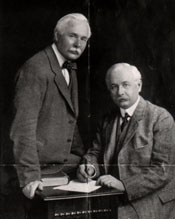
The manufacture of aircraft
has been undertaken on the Yeovil site of what is now Westland Helicopters since
1915. At the turn of the century, before the first aeroplane had flown, Yeovil
was better known as a market town and centre for the gloving industry, the only
significant engineering activity in the area, was with Petters limited who
produced oil engines providing power for agricultural purposes and light
industry.
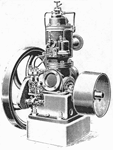
The Petter engines were in considerable demand and the Nautilus Works,
situated in the centre of Yeovil was producing up to 1500 engines annually
during the years immediately before the war. Petters was a family company, run
by twin brothers, Ernest and Percy Petter. Such was the success of their oil
engines, that by the outbreak of war they were already looking for a suitable
site for a new foundry near the railway.
In addition to the foundry, some 75 acres of farmland was purchased in order
to build a garden village to house the expected increase in the workforce. The
whole plan was changed by the onset of war, as hostilities gathered momentum, so
the consumption of ammunition and equipment increased, outstripping the existing
capacity and there was an immediate appeal from the government for companies to
turn their attention to the armament manufacture.
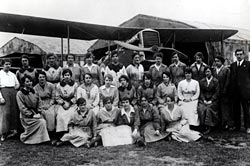
The Petters responded immediately, and telegrams were sent to both the War
Office and the Admiralty offering to place their facilities and workforce at
government disposal, for use in any capacity. Their approach was received with
some indifference by the War Office, but a prompt reply came from the Admiralty.
Following a meeting in London, it was suggested that the local sewing skills in
the gloving industry, combined with Petters engineering capability could be well
adapted for aircraft manufacture.
The result was an order for twelve Short Type 184 patrol seaplanes, followed
by a contract to build twenty Short Type 166, the completed seaplanes were
transported to Hamble for flight testing. The success with the seaplanes
resulted in a contract to build Sopwith 11/2
Strutters.
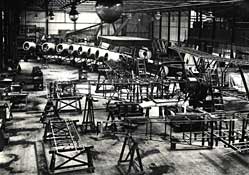
By 1916 construction of the factory and airfield was well in hand, completion
of Sopwith contracts was quickly followed by order to build de Havilland 4 and 9
two-seat bombers, these were often delivered directly to the Western front. It
became a Westland custom to ballast the rear seat of these aircraft with a
barrel of the local cider.
Towards the end of the war, Westland were sub-contracted by de-Havilland to
install the American Liberty engine in the DH-9 to produce the DH-9A, having
completed this work satisfactorily, Westland became the prime contractor for the
type. This was an important factor in establishing Westland as a major company
in Britain's aircraft industry.
Westland were also contracted to build 75 Vickers Vimys and had completed 25
of these when the war ended, by which time over 1100 aircraft had been
delivered. Many of the original buildings, including the large hangar
constructed for Vimy production, are still in use within the Yeovil factory
today.
With peace came uncertainty. In the years which followed the First World War,
Westland designed a number of civil aircraft including the Limousine, Three
engined Wessex airliner, Woodpidgeon and Widgeon.
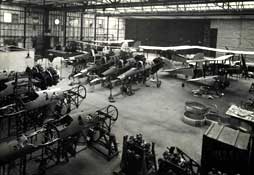
The DH-9A continued in
production at Yeovil until 1927, and this was followed by the Wapiti, which
incorporated a large proportion of DH-9A airframe components and was the
winner of the competition for a General Purpose aircraft, to become the
mainstay of RAF operations in the Middle East and India throughout the
peace-time years, a total of 563 were built.
The continuous production of the Wapiti and its successor the Wallace served
as an effective cushion for Yeovil during the lean years of the depression.
Westland was a very innovative company and during the years before World War
II, a number of exciting designs were flown. The most striking of these were
the range of Westland-Hill Pterodactyl tailless aircraft and the very sleek
Wizard monoplane fighter.
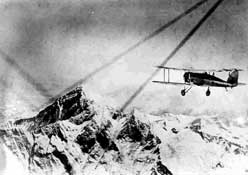
In 1933 a modified Wapiti (The
Westland-Houston PV-3) flew over the summit of Everest (29,030ft). Although
flying at such altitudes is now commonplace, the achievement attracted press
attention comparable with the early space shots, and was indicative of an
interest in high altitude flying and cabin conditioning which was to re-emerge
later.
There was also a brief
excursion into Rotary winged aircraft in 1936, when Westland constructed two
Cierva autogyro designs, the CL-20 and the C-29. The rotorcraft activity
discontinued due to the imminent war.
The prototype Lysander flew at
the end of 1936, intended to provide a modern general purpose aircraft, its
design was a logical progression of the peacetime role which had fallen to the
Wapiti, Wallace and Hectors. The Lysander had remarkable Short Take-off and
Landing capabilities and was well suited for an un-opposed Army Co-operation
role defined in the specification.
Westland were also building a
small powerful twin-engined fighter, the Whirlwind intended to maintain air
superiority over the English Channel and Northern France. again the innovative
approach was evident, the Whirlwind was armed with four 20mm cannon, neatly
grouped in the nose, offering fire power well in advance of contemporary
thinking. As events transpired, the capitulation of France eliminated the
requirement for long range fighters, and the Whirlwind only saw limited
service.
When war came in 1939,
Westland were well advanced in production of the two new aircraft. Lysanders
were already in service and several squadrons went to France to support the
Army. They suffered badly against the Luftwaffe, leaving no doubt that the
Lysander was neither intended or suited to blitzkrieg warfare. For the rest of
the war they served as target towing and Search and rescue roles, but they
will always be remembered for the vital part they played flying secret agents
to France at night, using their unique short field capabilities to full
advantage.
The destruction of the
Supermarine factory at Southampton by German bombing brought Spitfire
production to a stand still and Yeovil was one of the factories selected to
recover this serious situation, within three months Spitfires were rolling off
the line supported by a network of small local shadow factories which had been
hastily set up in the Yeovil area.

Westland played a major part
in the design of the Seafire and by the end of the war over 2000 Spitfire/Seafires
had been produced in the Westland factories at Yeovil and Ilchester.
One of the most important
aircraft to be produced during the war period was the Welkin high altitude
fighter. It was required to combat the high flying German reconnaissance
aircraft. The requirement to operate at altitudes of 40,000 ft or more called
for cabin pressurisation and it was from this pioneering work that the
independent company Normalair developed.
The last fixed-wing design to
be produced by Westland was the powerful Wyvern shipborne strike fighter,
powered by a large turboprop driving contra-rotating propellers it entered
service with the Royal Navy in 1953 and was used operationally during the Suez
crisis in 1956.
Over 6000 fixed wing aircraft
were built at Yeovil between 1915 and 1955. With the end of the war meant that
the large aircraft industry would have to adapt to peacetime needs. The board
of Westland Aircraft decided that the future may lie with a totally different
form of flying machine, the helicopter.
The first practical
helicopters had appeared towards the end of the war in Germany and USA, one of
the most successful American designers being Sikorsky. In 1946 Westland
negotiated a long term agreement to build Sikorsky designs under licence, but
they also made the bold policy decision to specialise in helicopter designs
for the future.
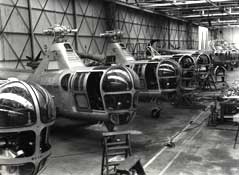
Work started with the Sikorsky
S-51, which was subjected to some re-design to become the Dragonfly, flying
for the first time in 1948, in service with the Royal Navy and RAF by 1953.
Success with the Dragonfly was repeated with the S-55 to become the Whirlwind
and in 1958 the S-58 was re-engined with a gas turbine to become the Wessex.
The introduction of
helicopters into the Royal Navy was to transform Naval Aviation. The use of
helicopters equipped with dipping sonar superseded fixed wing aircraft in the
anti-submarine role while helicopters brought a whole new dimension to search
and rescue.
It must not be assumed that
Westland simply built off the shelf designs under licence. In all cases the
Westland versions were subject to re-design and incorporated many
improvements. Later Whirlwinds were re-engined with gas-turbines and the
Wessex included a very advanced autopilot, setting the highest standards in
the anti-submarine role.
In 1960 the British aircraft
industry underwent a major re-organisation. There were at the time over twenty
aircraft manufacturers, all competing for a few orders. The government of the
time made it clear that it could no longer support this situation.
The result was a period of
re-organisation where many of the companies combined to form only two major
aircraft manufacturing groups (The British Aircraft Corporation and the Hawker
Siddeley Group), neither of which had retained any interest in rotorcraft.
Because of its success in the helicopter business, Westland were well placed
to take the lead for rotary winged aircraft, there followed a period when
Westland acquired Bristol Helicopters, Fairey Aviation and Saunders-Roe to
become Westland Helicopters, Britain's sole helicopter company with full order
books for Wessex, Scout and Wasp.
The partnership with Sikorsky
continued with the adoption of the SH-3D to produce the Sea King. At the same
time the British forces requirement for a range of new helicopters was met by
collaboration with the French company, Aerospatiale to produce three new
designs, Puma, Gazelle and Lynx.
Westland were to take design
leadership for the Lynx, while Aerospatiale were to be responsible for Puma
and Gazelle. Both companies were to take part in the development and
manufacture of all the aircraft. The Anglo-French Helicopter Package Deal
represented a major step in the development of Westland within the European
aircraft industry.
There followed a period of
unprecedented prosperity for Westland, the Lynx was a great success, setting a
new high standard for small ship operations with Westland becoming the world
leader in this field. A substantial number of Pumas and Gazelles were on order
for the British services, while Sea King was doing well in the export market.
As the Lynx established itself
with overseas orders, a decision was made to launch a larger aircraft, based
on Lynx dynamic components as a private venture on the civil market. This was
to be the 12000lb/14 passenger Westland 30. The W30 met with some initial
success in the UK and USA, but the expected orders never materialised in time
to fill the production gap which was predicted once the UK military orders had
been delivered.
The mid 1980s proved to be a
difficult time for Westland. On the one hand there was a need to find a
suitable partner to invest capital, sufficient to sustain the company over the
period when a new product could be brought on line. At the same time the
company was making considerable investment in composite blade technology and
design of a replacement for the Sea King.
Westland favoured a proposal
for a major link with Sikorsky but the then Secretary of State for Defence,
Micheal Hesseltine, preferred a European option. The Westland dilemma made
national news at the time, but the link with Sikorsky went ahead and Westland
survived.
Westland had already entered
an agreement with the Italian firm Agusta, to collaborate in the design,
development and production of a new large helicopter to meet the requirement
for a Sea King replacement. The two companies formed a joint company, EH
Industries, specifically to produce the EH101, a multi-role helicopter
designed to meet naval, military utility and civil requirements.
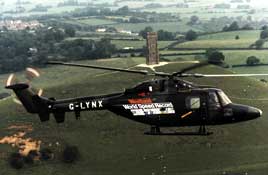
There followed an interesting
turn of events whereby at the time when the firms financial future had been in
doubt, the Lynx took the World absolute speed record for helicopters
(400.87kph / 249.1 mph) with the new composite rotor blades and the prototype
EH101 flew for the first time.
The EH101 development
programme progressed well, and in 1991 the Ministry of Defence placed an order
for 44 anti-submarine warfare aircraft designated EH101 Merlin HM Mk1.
Following a competition, the prime contract was placed with a consortium led
by the US company IBM, supported by Westland, in preference to a rival
consortium led by British Aerospace and GEC Marconi. The need for the
competition and the involvement of IBM as Westland's partner was because
neither Westland or EHI were in a position to satisfy the MoD requirement that
the prime contractor must have sufficient resources to underwrite the value of
the whole �1.5 billion contract.
The engineering company GKN
had been a major shareholder in the Westland Group since 1987 and was one of
the Groups strongest supporters. Sikorsky's parent company, United
Technologies, was the other significant shareholder and in 1994 it decided to
sell its holding. GKN bought the UTC shares and launched a successful
take-over bid for Westland.
Re-named GKN Westland
Helicopters in 1995, the substantial financial muscle of GKN enabled the
company to bid successfully as prime contractor for the �600 million Support
Helicopter contract for the RAF (Merlin HC Mk 3), and the �2 billion Attack
Helicopter contract for the Army Air Corps (WAH-64 Apache).
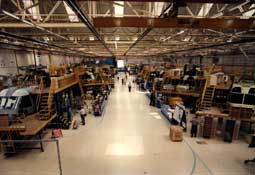
In 1998 GKN and Finnemeccanica
announced that they were starting negotiations to create a joint venture
company by combining their respective helicopter companies, Westland and
Agusta. Those negotiations were successfully concluded in July 2000. The
company AgustaWestland, will be the second largest helicopter company in the
world, with a turnover of more than US$2 Billion and a workforce of some
10,000 people.
By retaining the name
Westland, the new company is perpetuating the proud heritage that has been
associated with that name since Sir Ernest Petter made his first approach to
the admiralty in 1915.
| 